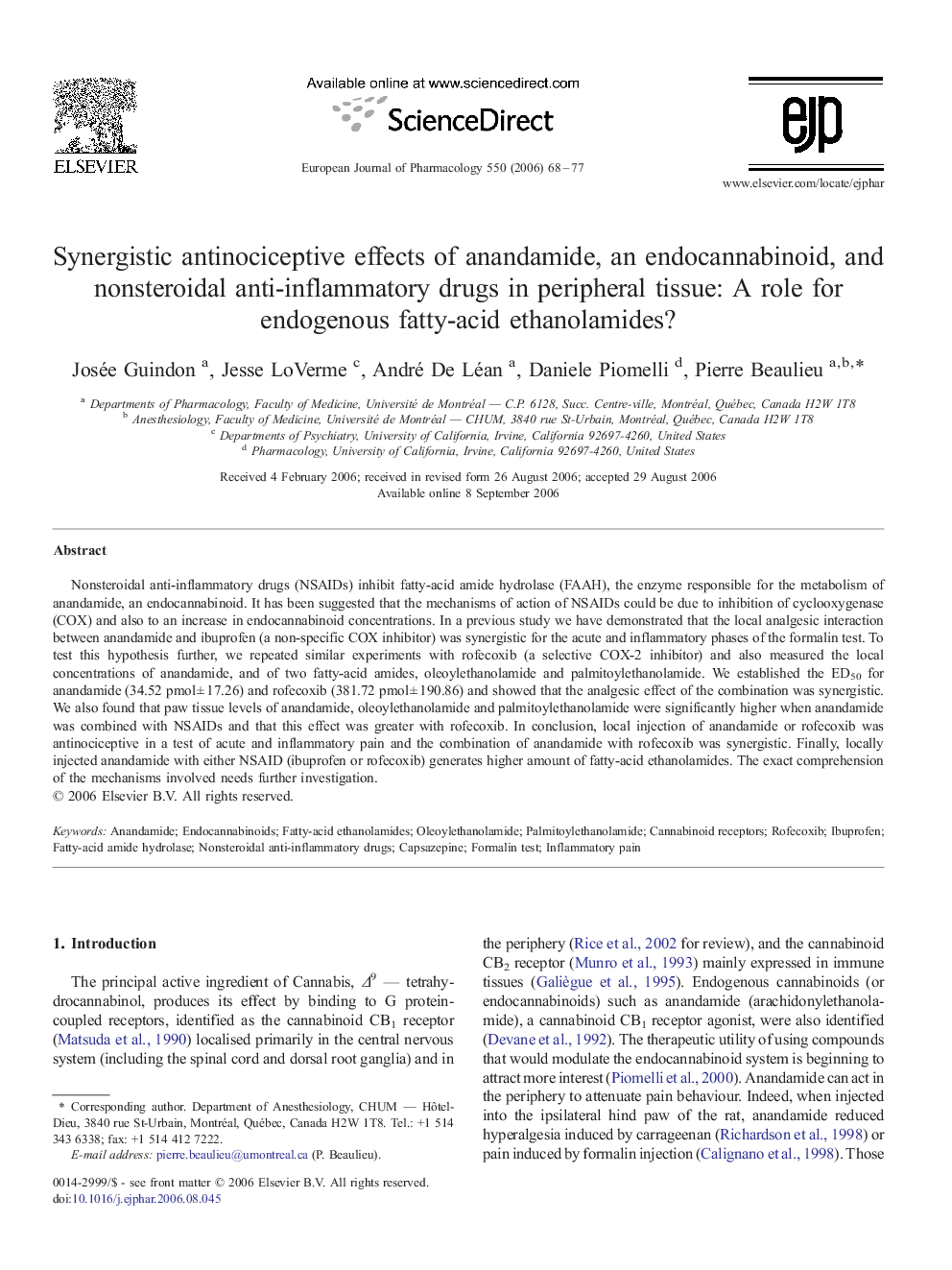| Article ID | Journal | Published Year | Pages | File Type |
|---|---|---|---|---|
| 2536656 | European Journal of Pharmacology | 2006 | 10 Pages |
Nonsteroidal anti-inflammatory drugs (NSAIDs) inhibit fatty-acid amide hydrolase (FAAH), the enzyme responsible for the metabolism of anandamide, an endocannabinoid. It has been suggested that the mechanisms of action of NSAIDs could be due to inhibition of cyclooxygenase (COX) and also to an increase in endocannabinoid concentrations. In a previous study we have demonstrated that the local analgesic interaction between anandamide and ibuprofen (a non-specific COX inhibitor) was synergistic for the acute and inflammatory phases of the formalin test. To test this hypothesis further, we repeated similar experiments with rofecoxib (a selective COX-2 inhibitor) and also measured the local concentrations of anandamide, and of two fatty-acid amides, oleoylethanolamide and palmitoylethanolamide. We established the ED50 for anandamide (34.52 pmol ± 17.26) and rofecoxib (381.72 pmol ± 190.86) and showed that the analgesic effect of the combination was synergistic. We also found that paw tissue levels of anandamide, oleoylethanolamide and palmitoylethanolamide were significantly higher when anandamide was combined with NSAIDs and that this effect was greater with rofecoxib. In conclusion, local injection of anandamide or rofecoxib was antinociceptive in a test of acute and inflammatory pain and the combination of anandamide with rofecoxib was synergistic. Finally, locally injected anandamide with either NSAID (ibuprofen or rofecoxib) generates higher amount of fatty-acid ethanolamides. The exact comprehension of the mechanisms involved needs further investigation.
